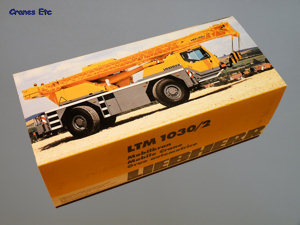 | | The box. | 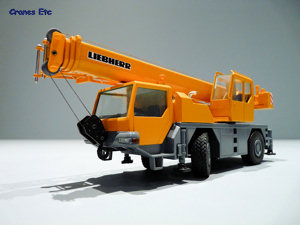 | | Good lock on the steering. |  | 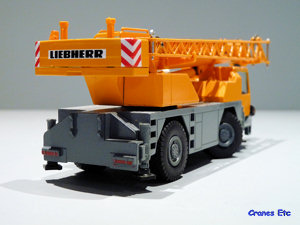 | | Rear view. | 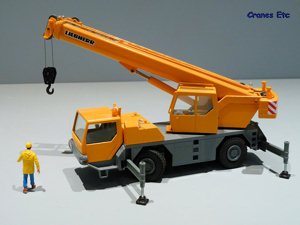 | | The outriggers are set and the crane is ready to lift. | 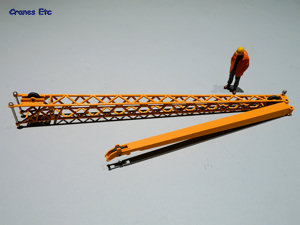 | | The fly jib. | 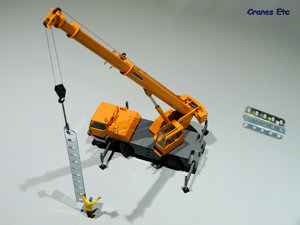 | | Placing a small steel column. |
| This model of a Liebherr 2-axle crane represents the smallest in the range of model Liebherr mobile cranes.
Packaging
The model is delivered in the usual Liebherr cardboard picture sleeve which encloses two polystyrene trays. There was no damage on the review model and no instructions are provided.
Detail
On the underside of the model there is no detail to speak of. At the front the driving cab has nicely inlaid light lenses within the metal bumper but unfortunately it does not include a loop for attaching the hook during transport. For this you have to crudely hook up under the bumper. The cab roof has an orange beacon light (and there is one at the rear of the crane) but there are no wing mirrors on this model. Inside the cab detail looks good.
The carrier has good climbing step details throughout and at the rear the lights are painted on. The only other significant detail is the metal exhaust pipe. Outrigger beams are plastic with screw cylinders and plastic base plates.
The crane itself has a good cab with excellent metal grab rails to the front and the top. Within the cab the level of detail is relatively simple. The boom is a four section telescope. As usual the main hydraulic cylinder has a plastic casing but on this model the boom head is also plastic although this is not too obtrusive. The pulleys are plastic and the main set in the boom head has three sheaves but is moulded as a single piece. The lattice section of the fly jib is metal and nicely cast and it fits to the boom head with the normal pinning system. The folding jib is a one piece plastic element which looks alright but does not give the same feel of quality as metal does. For transport the fly jib rests on a pair of plastic holders which slot into the main boom. The hook is a standard metal variety with three sheaves.
Features
Each of the axles steers independently and a very hard lock can be obtained so that a tiny turning circle is possible. All the other crane functions can be operated as expected, although the winch is turned by rolling the drum directly as there are no winding handles (which also means there is no unsightly handle to ruin the look of the model).
At the rear, the ballast plate appears to be a separate element held in place by two plastic rams. However on the review model the plate could not be released so it is not known if the ballast plate is intended to be removable for transport.
Quality
The painting and lettering are to the usual high Conrad standards. There is a little more plastic used than on some of the larger crane models.
Price
This crane is relatively inexpensive and offers good value.
Overall
The 1030/2 punches a little above its weight in that it looks good from a normal distance. Only up close is the use of plastic apparent and this is a testament to the good colour matching between the paint and plastic. A variety of display options are possible and overall the model is pleasing.
Footnotes
In 2010 the model was replaced by a new version which had a modified crane cab and some enhanced detailing. It was given model number 2105.
|
| |
| 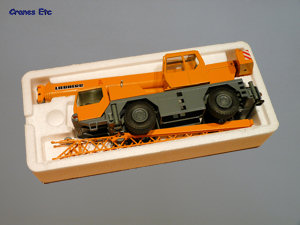 | | The model in the tray. | 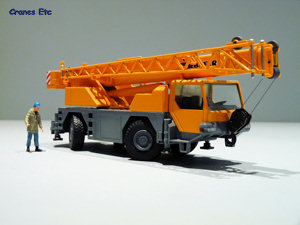 | | A very manoeuvrable crane. | 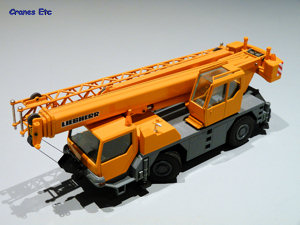 | | Simple details, but looks good nonetheless. | 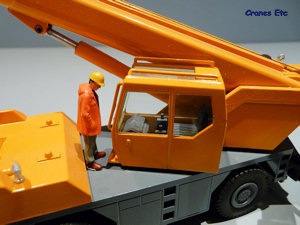 | | Reasonable cab detail. | 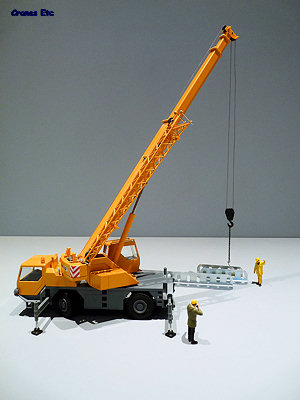 | | Moving to lift steel. |
|

